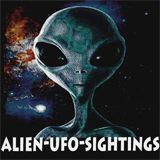The Possibility of Alien Life Forms and Unidentified Aerial Phenomena: Sightings Prior to the 17th Century
Around 1450, Gutenberg introduced the movable metal type in Europe; subsequently, religious texts such as the rationale Divinorum Officiorum, Mainz Psalter, and the Bible, were the first to be published. The first newspapers (1605), magazines (1663), and academic journals (1665), on the other hand, were not printed until the 17th century. The contemporary lack of a scientific method and professional journalism obfuscates the identification of UFO sightings.
Specifically, most records of “UFOs” before the 17th century’s Scientific Revolution contain a substantial amount of astrological or religious explanation, making sightings debatable. For example, the Byzantium historian George Sphrantzes writes about the fall of Constantinople in 1453: “Every night a fire descended from the sky, stood over the City, and enveloped her with light all night long. Their first interpretation of this heavenly sign was that God was expressing his wrath against Christians, indicating that the City would be burned and that her inhabitants would be enslaved to the Turks” (Marios, 1980). Other unreliable sightings describe a “cross” appearing in the sky (Fincelius 1556; Christian, 1981).
Despite these controversial records, objective sightings, such as vanishing globe in 1296 or a glistening globe in 1547, still exist (Vallee & Aubeck, 2010; Garratt, 1894; Goulart, 1600).
Additionally, several important UFO sightings that predate this time are found in the Song Dynasty of China. It is worth noting that this golden age in China had unrivaled levels of social development, prosperity, and technological advances that are comparable to those at the peak of the Roman Empire. The earliest use of compasses, gunpowder, paper money, and the metal printing press prior to Gutenberg are all attributed to this period. One sighting comes from a Leonardo of Song Dynasty, Shen Kuo (1031–1095); this genius was best known for his first use of the magnetic compass for navigation and discovery of true north. In Shen’s book, Mengxi bitan, he explains the first geometrical and quantitative workings of a camera obscura, the use of the magnetic compass for navigation, a solar eclipse, a lunar eclipse, the geological process of land formation, and gradual climate change (AAAS, 2012). In this same book (1088), he describes a UFO (China.org.cn, 2010).
During the Chia-yu reign-period [1056–1064] there was a huge “pearl” in Yangchow, seen frequently at night. At first, it appeared out of the marshes in T’ien-ch’ang county; later it moved to Pi-she Lake; finally, it settled at Hsin-k’ai Lake. For more than ten years residents and travelers saw it often. A friend of mine had a retreat by the lake. One night he noticed that the “pearl” was very nearby. At first, it opened its door just slightly. A bright light emerged from its “shell,” like a single ray of golden thread. A moment later the “shell” suddenly opened to about the size of half a mat. Inside there was a white light like silver. The “pearl” was as big as a fist, so bright one could not look at it directly. Shadows cast in the forests for more than ten tricents [one tricent 300 paces] distant were just like those cast by the first rays of sunshine in the morning. In the distance one could see only a red sky, like a forest fire. Quickly the “pearl” sped far off, as if it were flying, floating above the waves, bright and brilliant as sunlight (V. Mair, Trans.).
嘉祐中,揚州有一珠,甚大,天晦多見。初出於天長縣陂澤中,後
轉入甓社湖,又後乃在新開湖中,凡十餘處,居民行人常常見之。
余友人書齋在湖上,一夜忽見其珠,甚近。初微開其房,光自吻中
出。如橫一金線。俄頃忽張殼,其大如半席,殼中白光如銀,珠大
如拳,爛然不可正視。十餘里間林木皆有影,如初日所照;遠處但
見天赤如野火;倏然遠去,其行如飛;浮於波中,杳杳如日。
(Gute nberg, 2020)
The phenomenon was observed again in Jinshan Temple, located near Yangchow. This sighting in 1071 was recorded by Su Dongpo (Su Shi), the polymath of the Song Dynasty, and a pre-eminent figure in East Asian literature, art, and culture. He states, The fire shines in the middle of the lake. The flying fire lights up the mountain and scares a crow. Bewildered, I return home in bed and my mind is puzzled. It’s not a work of man or ghost. What is it?
江心似有炬火明 飛焰照山棲烏驚 悵然歸臥心莫識 非鬼非人竟何物 (胡懷琛, 1978). He further adds in the end that he himself has witnessed the event (原註: 是夜所見如此).
NASA Scientist Richard B. Stothers (2007) notes that Unidentified Flying Objects have even been recorded in Ancient Rome. He classifies historical sightings in the Roman Empire into two subgroups: “flying armaments,” in which sightings are recorded in military language, and “fiery globes” that are explained in meteorological and astronomical language. The subgroup “flying armaments” reflects the tendency to associate the most contemporary advanced military technology in modern UFO reports. He provides historical descriptions that would fall into the same categories as modern UFO reports, such as “round shields” (parmas) seen in the sky in 217 BC and “a round shield” (clipeus) burning and emitting sparks in 100 BC (Stothers, 2007).
Thus, it may be difficult to pinpoint the beginnings of the UFO phenomenon. Despite their controversy, UAP or UFOs are historically well-documented and have been reported by scholars and others that hold valid credentials. Furthermore, objective records of anomalies that correspond to modern UFO sightings can be found in most flourishing and populated parts of the world throughout history. Long before they became a phenomenon in the United States, these sightings existed in the Roman Empire, the Song Dynasty, France, and Great Britain. Nevertheless, a number of arguable records of UFOs that predate the Scientific Revolution of the 17th century are not discussed here due to people’s widespread lack of astronomical knowledge at the time and their tendency to consider the aerial phenomena a religious omen. Therefore, their hyperbolic descriptions are often superfluous in exploring the possible connection between UFOs and alien intelligence.
Unfortunately, the discussion of historical UFOs has been abused to attract people’s attention, including exceedingly wild and unverified speculations of how ancient aliens influenced human civilizations. Consequently, this over- representation has tainted any effort to analyze UAP with a “lunatic fringe” and successfully prevented actual scientists from exploring this topic.
